-

May
08
Interpretive Summary: Effects of dietary metabolizable energy density and inclusion of oxidized soybean oil on the growth performance, serum biochemical parameters, redox status, and wooden breast incidence of broilers
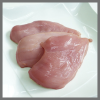
Dietary nutrients not only play a crucial role in growth and pectoralis muscle production of broilers but also are associated with the occurrence of pectoralis myopathies. Soybean oil is commonly added to animal diets to increase energy density.
Read more
-

May
08
Interpretive Summary: The effects of a plant-based and a plant- and marine-based n-3 oil supplement on behavioral reactivity, heart rate variability, and plasma fatty acid profile in young healthy horses

Reactive behaviors in horses can impact the welfare and safety of both the horse and the handler. Reductions in reactivity have been observed in horses-fed diets with increased fat and low starch and sugar, but the effects of specific fatty acids on reactive behaviors in horses is unknown. Therefore, the objective of the study is to investigate the impacts of camelina oil (providing the plant-based α-linolenic acid, ALA) and a mix of camelina and algae oil (providing the marine-based eicosapentaenoic acid, EPA, and docosahexaenoic acid, DHA) on plasma fatty acids, heart rate variability, and reactive behaviors.
Read more
-

May
01
Interpretive Summary: Changes in the skeletal muscle transcriptome due to the intramuscular administration of lidocaine in wether lambs
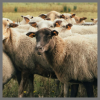
Lidocaine, a typical local anesthetic, is used during medical procedures to reduce pain by blocking nerve signals. Researchers often apply lidocaine at biopsy sites to ease discomfort, assuming it does not affect characteristics of the tissue relevant to their study.
Read more
-

May
01
Interpretive Summary: Genetic parameters for image-based estimations of swine feet and leg conformation traits

Breeding herd retention poses significant challenges to the swine industry, with lameness ranking as a leading cause for breeding pig removal from the herd. Structural conformation is typically evaluated through visual observation; however, these methods are subjective and can vary in accuracy between observers. This study developed and assessed a computer-based algorithm for extracting feet and leg conformation traits from images of pigs.
Read more
-

May
01
Interpretive Summary: Whole pulse ingredient inclusion in macronutrient-balanced diets increased fecal concentrations of propionic acid but not total bile acids in healthy adult large-breed dogs after 20 weeks

Pulse ingredients are heavily used in the global pet food industry, but little is known about how diets that contain different amounts of total dietary fiber and starch affect the fecal bile acids (BAs) and metabolites produced. The objective of this study was to understand how the inclusion of pulse ingredients at the sacrifice of grains or pea starch affected the excretion of fecal BAs and metabolites, such as short-chain fatty acids (SCFAs) in healthy adult dogs.
Read more
-

May
01
Interpretive Summary: Evaluation of nutritional values of defatted black soldier fly (Hermetia illucens) larvae meal using the precision-fed cecectomized rooster assay

This study investigates the use of defatted black soldier fly larvae meal (BSFLM) as an alternative protein source for pet food. Two BSFLM raised on wheat (BSFLM-W) or corn (BSFLM-C) substrates were compared with traditional protein sources, whole egg powder (WEP) and chicken meal (CM). The precision-fed cecectomized rooster assay was employed to determine the protein quality of these ingredients.
Read more
-

May
01
Interpretive Summary: Negative energy balance by feed deprivation affects the adipose miRNome in the lactating goat

Ruminant adipose tissue (AT) stores lipids for use in productive functions during negative energy balance (NEB) which occurs during early lactation or undernutrition. The molecular mechanisms underlying the nutritional regulation of gene expression in AT from lactating goats are not fully understood.
Read more
-

May
01
Interpretive Summary: Rethinking sustainability: recognizing animal welfare’s critical role
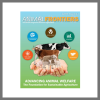
This special issue of Animal Frontiers is the legacy of two major scientific events related to farm animal welfare that took place in Florence, Italy in 2024. The first was the 9th International Conference on the Welfare Assessment of Animals at Farm Level (WAFL) organized in collaboration with the Health and Welfare Commission of the European Federation of Animal Science (EAAP).
Read more
-

Apr
24
Heritable Genetic Modification in Food Animals

A consensus study that explored Heritable Genetic Modification in Food Animals was released by the National Academies of Science, Engineering, and Medicine (NASEM) on April 23, 2025, noting the study committee’s conclusion that overall, food derived from genome-edited animals is generally safe to eat. The committee also addressed the benefits of biotechnology to agricultural productivity and sustainability, while investigating potential risks.
Read more
-

Apr
24
Key Scientific Takeaways from the 2025 International Livestock Congress: The A,B,C’s of Communicating About the Value of Animal Agriculture to Society
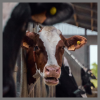
The 2025 International Livestock Congress (ILC) held March 4-5 in Houston, Texas, during the Houston Livestock Show & Rodeo, brought together global industry leaders, scholars, and policymakers to address critical issues shaping the future of animal agriculture. With the theme "Effectively Communicating Sound Science and the Value of Animal Agriculture to Society," this year’s Congress underscored the importance of data-driven decision-making, sustainability, and public engagement in shaping policies that impact the livestock and meat industries.
Read more
-

Apr
24
Washington Roundup – April 2025

The Trump Administration has directed agencies to evaluate additional reductions in the federal workforce as well as cuts to programs. Many agencies have offered a second round of deferred resignations and deferred retirements. While final numbers are not yet available, it appears that a larger number of federal workers are electing to leave service as a result of the second round...
Read more
-

Apr
22
The Giving Herd - ASAS Foundation Newsletter - April 2025

The April Edition of The Giving Herd, an ASAS Foundation Newsletter
Read more
-

Apr
22
Richard Coffey's Animal Science Journey

Richard Coffey's ASAS Journey
Read more
-

Apr
17
Interpretive Summary: A specific blend of prebiotics and postbiotics improved the gut microbiome of dogs with soft stools in the in vitro Simulator of the Canine Intestinal Microbial Ecosystem

Dogs with digestion problems can have an unbalanced digestive flora. This means the proportion of healthy and unhealthy bacteria that live in their gut is not well balanced. We used an experimental model to mimic the gut bacteria of dogs with soft stools. In the model, we looked at how a test product affected the gut bacteria.
Read more
-

Apr
17
Interpretive Summary: Acute enhanced liquid aspirin administration improves performance and intestinal function in nursery pigs

Traditional aspirin forms are known to cause stomach and intestinal damage. Enhanced liquid aspirin is a stable aspirin form which is thought to negate the negative effects of aspirin on the gastrointestinal tract. Feeding ELA improved body weight gain and several markers of intestinal function.
Read more
-

Apr
17
Interpretive Summary: Influence of heat stress and fescue toxicosis on the pulmonary arterial pressure of beef heifers

The ergot alkaloids produced by endophyte-infected (EI) varieties of tall fescue are beneficial to the plant but detrimental to cattle, as they induce different negative responses that are commonly referred to as fescue toxicosis (FT). The increased ambient temperature and humidity commonly experienced during the summer aggravate the symptoms of FT and this interaction significantly reduces animal performance and productivity.
Read more
-

Apr
17
Interpretive Summary: Out of Africa: genetic characterization and diversity of Mashona cattle in the United States

The Mashona cattle, a Bos taurus and Bos indicus composite, were brought from Zimbabwe to New Mexico in the 1990s. Since then, they have been valued by ranchers in hot and humid areas for their resistance to pests, heat, and maternal characteristics, making them ideal for crossbreeding. This study aimed to explore the genetic background and diversity of Mashona cattle in the United States by analyzing 24 samples from Tennessee State University.
Read more
-

Apr
17
Interpretive Summary: Breed-specific heterosis for growth and carcass traits in 18 U.S. cattle breeds

Heterosis, or hybrid vigor, is traditionally defined as the increase in the performance of crossbred progeny relative to the average performance of their purebred parents. These heterosis effects may vary depending on the breed of animals in the original cross; however, breed-specific estimates are difficult to obtain because of the resources required to estimate the effects. The Germplasm Evaluation Program at the U.S. Meat Animal Research Center is designed to evaluate crosses of 18 different prominent U.S. beef cattle breeds.
Read more
-

Apr
17
Interpretive Summary: The societal role of meat and livestock—what the science says
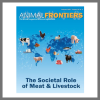
The Dublin Declaration of Scientists on the Societal Role of Livestock (2023) was initiated during the International Summit on the Societal Role of Meat, held in October 2022 in Dublin. Scientific evidence in support of the declaration was provided through a variety of oral presentations by leading experts and a series of articles published in a previous Themed Issue of Animal Frontiers (Volume 13, Issue 2, April 2023, ISSN 2160-6056, EISSN 2160-6064). Since the declaration was issued for the publishing of this editorial, over 1,200 verified scientists from around the world have signed to document their agreement.
Read more
-

Apr
03
Interpretive Summary: Enteric methane emission classification and ranking of growing steers during the backgrounding and finishing phases
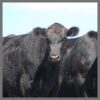
Ruminants present variability in enteric methane (CH4) emissions over time and due to changes in dietary characteristics; however, limited information exists regarding the re-ranking according to CH4 emissions of growing steers during the backgrounding and finishing phases, and the effect of using metabolic modulators such as growth-promoting implants, on gas flux. In this experiment, 46 Angus steers were evaluated during the backgrounding and finishing phases.
Read more
 MayInterpretive Summary: Effects of dietary metabolizable energy density and inclusion of oxidized soybean oil on the growth performance, serum biochemical parameters, redox status, and wooden breast incidence of broilers
MayInterpretive Summary: Effects of dietary metabolizable energy density and inclusion of oxidized soybean oil on the growth performance, serum biochemical parameters, redox status, and wooden breast incidence of broilers Dietary nutrients not only play a crucial role in growth and pectoralis muscle production of broilers but also are associated with the occurrence of pectoralis myopathies. Soybean oil is commonly added to animal diets to increase energy density.
Dietary nutrients not only play a crucial role in growth and pectoralis muscle production of broilers but also are associated with the occurrence of pectoralis myopathies. Soybean oil is commonly added to animal diets to increase energy density. MayInterpretive Summary: The effects of a plant-based and a plant- and marine-based n-3 oil supplement on behavioral reactivity, heart rate variability, and plasma fatty acid profile in young healthy horses
MayInterpretive Summary: The effects of a plant-based and a plant- and marine-based n-3 oil supplement on behavioral reactivity, heart rate variability, and plasma fatty acid profile in young healthy horses Reactive behaviors in horses can impact the welfare and safety of both the horse and the handler. Reductions in reactivity have been observed in horses-fed diets with increased fat and low starch and sugar, but the effects of specific fatty acids on reactive behaviors in horses is unknown. Therefore, the objective of the study is to investigate the impacts of camelina oil (providing the plant-based α-linolenic acid, ALA) and a mix of camelina and algae oil (providing the marine-based eicosapentaenoic acid, EPA, and docosahexaenoic acid, DHA) on plasma fatty acids, heart rate variability, and reactive behaviors.
Reactive behaviors in horses can impact the welfare and safety of both the horse and the handler. Reductions in reactivity have been observed in horses-fed diets with increased fat and low starch and sugar, but the effects of specific fatty acids on reactive behaviors in horses is unknown. Therefore, the objective of the study is to investigate the impacts of camelina oil (providing the plant-based α-linolenic acid, ALA) and a mix of camelina and algae oil (providing the marine-based eicosapentaenoic acid, EPA, and docosahexaenoic acid, DHA) on plasma fatty acids, heart rate variability, and reactive behaviors. MayInterpretive Summary: Changes in the skeletal muscle transcriptome due to the intramuscular administration of lidocaine in wether lambs
MayInterpretive Summary: Changes in the skeletal muscle transcriptome due to the intramuscular administration of lidocaine in wether lambs Lidocaine, a typical local anesthetic, is used during medical procedures to reduce pain by blocking nerve signals. Researchers often apply lidocaine at biopsy sites to ease discomfort, assuming it does not affect characteristics of the tissue relevant to their study.
Lidocaine, a typical local anesthetic, is used during medical procedures to reduce pain by blocking nerve signals. Researchers often apply lidocaine at biopsy sites to ease discomfort, assuming it does not affect characteristics of the tissue relevant to their study. MayInterpretive Summary: Genetic parameters for image-based estimations of swine feet and leg conformation traits
MayInterpretive Summary: Genetic parameters for image-based estimations of swine feet and leg conformation traits Breeding herd retention poses significant challenges to the swine industry, with lameness ranking as a leading cause for breeding pig removal from the herd. Structural conformation is typically evaluated through visual observation; however, these methods are subjective and can vary in accuracy between observers. This study developed and assessed a computer-based algorithm for extracting feet and leg conformation traits from images of pigs.
Breeding herd retention poses significant challenges to the swine industry, with lameness ranking as a leading cause for breeding pig removal from the herd. Structural conformation is typically evaluated through visual observation; however, these methods are subjective and can vary in accuracy between observers. This study developed and assessed a computer-based algorithm for extracting feet and leg conformation traits from images of pigs. MayInterpretive Summary: Whole pulse ingredient inclusion in macronutrient-balanced diets increased fecal concentrations of propionic acid but not total bile acids in healthy adult large-breed dogs after 20 weeks
MayInterpretive Summary: Whole pulse ingredient inclusion in macronutrient-balanced diets increased fecal concentrations of propionic acid but not total bile acids in healthy adult large-breed dogs after 20 weeks Pulse ingredients are heavily used in the global pet food industry, but little is known about how diets that contain different amounts of total dietary fiber and starch affect the fecal bile acids (BAs) and metabolites produced. The objective of this study was to understand how the inclusion of pulse ingredients at the sacrifice of grains or pea starch affected the excretion of fecal BAs and metabolites, such as short-chain fatty acids (SCFAs) in healthy adult dogs.
Pulse ingredients are heavily used in the global pet food industry, but little is known about how diets that contain different amounts of total dietary fiber and starch affect the fecal bile acids (BAs) and metabolites produced. The objective of this study was to understand how the inclusion of pulse ingredients at the sacrifice of grains or pea starch affected the excretion of fecal BAs and metabolites, such as short-chain fatty acids (SCFAs) in healthy adult dogs. MayInterpretive Summary: Evaluation of nutritional values of defatted black soldier fly (Hermetia illucens) larvae meal using the precision-fed cecectomized rooster assay
MayInterpretive Summary: Evaluation of nutritional values of defatted black soldier fly (Hermetia illucens) larvae meal using the precision-fed cecectomized rooster assay This study investigates the use of defatted black soldier fly larvae meal (BSFLM) as an alternative protein source for pet food. Two BSFLM raised on wheat (BSFLM-W) or corn (BSFLM-C) substrates were compared with traditional protein sources, whole egg powder (WEP) and chicken meal (CM). The precision-fed cecectomized rooster assay was employed to determine the protein quality of these ingredients.
This study investigates the use of defatted black soldier fly larvae meal (BSFLM) as an alternative protein source for pet food. Two BSFLM raised on wheat (BSFLM-W) or corn (BSFLM-C) substrates were compared with traditional protein sources, whole egg powder (WEP) and chicken meal (CM). The precision-fed cecectomized rooster assay was employed to determine the protein quality of these ingredients. MayInterpretive Summary: Negative energy balance by feed deprivation affects the adipose miRNome in the lactating goat
MayInterpretive Summary: Negative energy balance by feed deprivation affects the adipose miRNome in the lactating goat Ruminant adipose tissue (AT) stores lipids for use in productive functions during negative energy balance (NEB) which occurs during early lactation or undernutrition. The molecular mechanisms underlying the nutritional regulation of gene expression in AT from lactating goats are not fully understood.
Ruminant adipose tissue (AT) stores lipids for use in productive functions during negative energy balance (NEB) which occurs during early lactation or undernutrition. The molecular mechanisms underlying the nutritional regulation of gene expression in AT from lactating goats are not fully understood. MayInterpretive Summary: Rethinking sustainability: recognizing animal welfare’s critical role
MayInterpretive Summary: Rethinking sustainability: recognizing animal welfare’s critical role This special issue of Animal Frontiers is the legacy of two major scientific events related to farm animal welfare that took place in Florence, Italy in 2024. The first was the 9th International Conference on the Welfare Assessment of Animals at Farm Level (WAFL) organized in collaboration with the Health and Welfare Commission of the European Federation of Animal Science (EAAP).
This special issue of Animal Frontiers is the legacy of two major scientific events related to farm animal welfare that took place in Florence, Italy in 2024. The first was the 9th International Conference on the Welfare Assessment of Animals at Farm Level (WAFL) organized in collaboration with the Health and Welfare Commission of the European Federation of Animal Science (EAAP). AprHeritable Genetic Modification in Food Animals
AprHeritable Genetic Modification in Food Animals A consensus study that explored Heritable Genetic Modification in Food Animals was released by the National Academies of Science, Engineering, and Medicine (NASEM) on April 23, 2025, noting the study committee’s conclusion that overall, food derived from genome-edited animals is generally safe to eat. The committee also addressed the benefits of biotechnology to agricultural productivity and sustainability, while investigating potential risks.
A consensus study that explored Heritable Genetic Modification in Food Animals was released by the National Academies of Science, Engineering, and Medicine (NASEM) on April 23, 2025, noting the study committee’s conclusion that overall, food derived from genome-edited animals is generally safe to eat. The committee also addressed the benefits of biotechnology to agricultural productivity and sustainability, while investigating potential risks. AprKey Scientific Takeaways from the 2025 International Livestock Congress: The A,B,C’s of Communicating About the Value of Animal Agriculture to Society
AprKey Scientific Takeaways from the 2025 International Livestock Congress: The A,B,C’s of Communicating About the Value of Animal Agriculture to Society The 2025 International Livestock Congress (ILC) held March 4-5 in Houston, Texas, during the Houston Livestock Show & Rodeo, brought together global industry leaders, scholars, and policymakers to address critical issues shaping the future of animal agriculture. With the theme "Effectively Communicating Sound Science and the Value of Animal Agriculture to Society," this year’s Congress underscored the importance of data-driven decision-making, sustainability, and public engagement in shaping policies that impact the livestock and meat industries.
The 2025 International Livestock Congress (ILC) held March 4-5 in Houston, Texas, during the Houston Livestock Show & Rodeo, brought together global industry leaders, scholars, and policymakers to address critical issues shaping the future of animal agriculture. With the theme "Effectively Communicating Sound Science and the Value of Animal Agriculture to Society," this year’s Congress underscored the importance of data-driven decision-making, sustainability, and public engagement in shaping policies that impact the livestock and meat industries. AprWashington Roundup – April 2025
AprWashington Roundup – April 2025 The Trump Administration has directed agencies to evaluate additional reductions in the federal workforce as well as cuts to programs. Many agencies have offered a second round of deferred resignations and deferred retirements. While final numbers are not yet available, it appears that a larger number of federal workers are electing to leave service as a result of the second round...
The Trump Administration has directed agencies to evaluate additional reductions in the federal workforce as well as cuts to programs. Many agencies have offered a second round of deferred resignations and deferred retirements. While final numbers are not yet available, it appears that a larger number of federal workers are electing to leave service as a result of the second round... AprThe Giving Herd - ASAS Foundation Newsletter - April 2025
AprThe Giving Herd - ASAS Foundation Newsletter - April 2025 The April Edition of The Giving Herd, an ASAS Foundation Newsletter
The April Edition of The Giving Herd, an ASAS Foundation Newsletter AprRichard Coffey's Animal Science Journey
AprRichard Coffey's Animal Science Journey Richard Coffey's ASAS Journey
Richard Coffey's ASAS Journey AprInterpretive Summary: A specific blend of prebiotics and postbiotics improved the gut microbiome of dogs with soft stools in the in vitro Simulator of the Canine Intestinal Microbial Ecosystem
AprInterpretive Summary: A specific blend of prebiotics and postbiotics improved the gut microbiome of dogs with soft stools in the in vitro Simulator of the Canine Intestinal Microbial Ecosystem Dogs with digestion problems can have an unbalanced digestive flora. This means the proportion of healthy and unhealthy bacteria that live in their gut is not well balanced. We used an experimental model to mimic the gut bacteria of dogs with soft stools. In the model, we looked at how a test product affected the gut bacteria.
Dogs with digestion problems can have an unbalanced digestive flora. This means the proportion of healthy and unhealthy bacteria that live in their gut is not well balanced. We used an experimental model to mimic the gut bacteria of dogs with soft stools. In the model, we looked at how a test product affected the gut bacteria. AprInterpretive Summary: Acute enhanced liquid aspirin administration improves performance and intestinal function in nursery pigs
AprInterpretive Summary: Acute enhanced liquid aspirin administration improves performance and intestinal function in nursery pigs Traditional aspirin forms are known to cause stomach and intestinal damage. Enhanced liquid aspirin is a stable aspirin form which is thought to negate the negative effects of aspirin on the gastrointestinal tract. Feeding ELA improved body weight gain and several markers of intestinal function.
Traditional aspirin forms are known to cause stomach and intestinal damage. Enhanced liquid aspirin is a stable aspirin form which is thought to negate the negative effects of aspirin on the gastrointestinal tract. Feeding ELA improved body weight gain and several markers of intestinal function. AprInterpretive Summary: Influence of heat stress and fescue toxicosis on the pulmonary arterial pressure of beef heifers
AprInterpretive Summary: Influence of heat stress and fescue toxicosis on the pulmonary arterial pressure of beef heifers The ergot alkaloids produced by endophyte-infected (EI) varieties of tall fescue are beneficial to the plant but detrimental to cattle, as they induce different negative responses that are commonly referred to as fescue toxicosis (FT). The increased ambient temperature and humidity commonly experienced during the summer aggravate the symptoms of FT and this interaction significantly reduces animal performance and productivity.
The ergot alkaloids produced by endophyte-infected (EI) varieties of tall fescue are beneficial to the plant but detrimental to cattle, as they induce different negative responses that are commonly referred to as fescue toxicosis (FT). The increased ambient temperature and humidity commonly experienced during the summer aggravate the symptoms of FT and this interaction significantly reduces animal performance and productivity. AprInterpretive Summary: Out of Africa: genetic characterization and diversity of Mashona cattle in the United States
AprInterpretive Summary: Out of Africa: genetic characterization and diversity of Mashona cattle in the United States The Mashona cattle, a Bos taurus and Bos indicus composite, were brought from Zimbabwe to New Mexico in the 1990s. Since then, they have been valued by ranchers in hot and humid areas for their resistance to pests, heat, and maternal characteristics, making them ideal for crossbreeding. This study aimed to explore the genetic background and diversity of Mashona cattle in the United States by analyzing 24 samples from Tennessee State University.
The Mashona cattle, a Bos taurus and Bos indicus composite, were brought from Zimbabwe to New Mexico in the 1990s. Since then, they have been valued by ranchers in hot and humid areas for their resistance to pests, heat, and maternal characteristics, making them ideal for crossbreeding. This study aimed to explore the genetic background and diversity of Mashona cattle in the United States by analyzing 24 samples from Tennessee State University. AprInterpretive Summary: Breed-specific heterosis for growth and carcass traits in 18 U.S. cattle breeds
AprInterpretive Summary: Breed-specific heterosis for growth and carcass traits in 18 U.S. cattle breeds Heterosis, or hybrid vigor, is traditionally defined as the increase in the performance of crossbred progeny relative to the average performance of their purebred parents. These heterosis effects may vary depending on the breed of animals in the original cross; however, breed-specific estimates are difficult to obtain because of the resources required to estimate the effects. The Germplasm Evaluation Program at the U.S. Meat Animal Research Center is designed to evaluate crosses of 18 different prominent U.S. beef cattle breeds.
Heterosis, or hybrid vigor, is traditionally defined as the increase in the performance of crossbred progeny relative to the average performance of their purebred parents. These heterosis effects may vary depending on the breed of animals in the original cross; however, breed-specific estimates are difficult to obtain because of the resources required to estimate the effects. The Germplasm Evaluation Program at the U.S. Meat Animal Research Center is designed to evaluate crosses of 18 different prominent U.S. beef cattle breeds. AprInterpretive Summary: The societal role of meat and livestock—what the science says
AprInterpretive Summary: The societal role of meat and livestock—what the science says The Dublin Declaration of Scientists on the Societal Role of Livestock (2023) was initiated during the International Summit on the Societal Role of Meat, held in October 2022 in Dublin. Scientific evidence in support of the declaration was provided through a variety of oral presentations by leading experts and a series of articles published in a previous Themed Issue of Animal Frontiers (Volume 13, Issue 2, April 2023, ISSN 2160-6056, EISSN 2160-6064). Since the declaration was issued for the publishing of this editorial, over 1,200 verified scientists from around the world have signed to document their agreement.
The Dublin Declaration of Scientists on the Societal Role of Livestock (2023) was initiated during the International Summit on the Societal Role of Meat, held in October 2022 in Dublin. Scientific evidence in support of the declaration was provided through a variety of oral presentations by leading experts and a series of articles published in a previous Themed Issue of Animal Frontiers (Volume 13, Issue 2, April 2023, ISSN 2160-6056, EISSN 2160-6064). Since the declaration was issued for the publishing of this editorial, over 1,200 verified scientists from around the world have signed to document their agreement. AprInterpretive Summary: Enteric methane emission classification and ranking of growing steers during the backgrounding and finishing phases
AprInterpretive Summary: Enteric methane emission classification and ranking of growing steers during the backgrounding and finishing phases Ruminants present variability in enteric methane (CH4) emissions over time and due to changes in dietary characteristics; however, limited information exists regarding the re-ranking according to CH4 emissions of growing steers during the backgrounding and finishing phases, and the effect of using metabolic modulators such as growth-promoting implants, on gas flux. In this experiment, 46 Angus steers were evaluated during the backgrounding and finishing phases.
Ruminants present variability in enteric methane (CH4) emissions over time and due to changes in dietary characteristics; however, limited information exists regarding the re-ranking according to CH4 emissions of growing steers during the backgrounding and finishing phases, and the effect of using metabolic modulators such as growth-promoting implants, on gas flux. In this experiment, 46 Angus steers were evaluated during the backgrounding and finishing phases.



